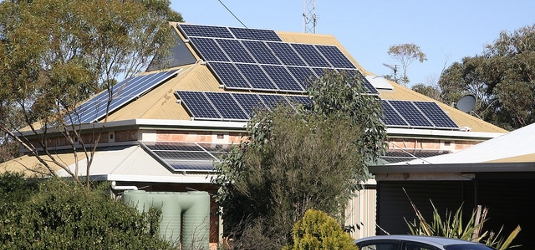SA Power Networks, the monopoly network operator in South Australia, has caused a furore in the solar industry by proposing a $100 a year network surcharge on solar households.
The proposal was revealed in a submission to the Australian Energy Regulator earlier this week, and follows decisions by both the Queensland and West Australian governments – the owners of their respective networks – to back away from similar moves.
SA Power Networks (SAPN), which operates the poles and wires that deliver electricity to homes and businesses throughout the state, and is owned by ASX-listed Spark Infrastructure, says all consumers will receive price reductions in the coming year on their network costs.
But while most households will receive a discount of $188 a year on their network costs, and “vulnerable” homes a saving of $388 a year, the 175,000 solar households in the state will only receive a discount of $88 a year.
SAPN justifies this by saying that solar households still need as much power from the network at peak times as other users, even if they use less electricity from the grid during the day when the sun shines.
But the decision has caused outrage in the solar industry, and accusations that SAPN was cherry-picking data to suit its argument. Queensland considered a similar move, before being warned by retailers that it would backfire. The WA government has also stepped away from a similar proposal.
Certainly, SAPN’s argument that solar households were not paying their fair share goes against their own pronouncements that the 590MW of solar PV was helping to add stability to the network in the summer peaks. “PV is shifting (the) peak, but also helping reduce stress on the network during heat-waves,” it said in its presentation to the market in February.
SAPN spokesman Paul Roberts said that was true, which was why the solar households would still receive a “discount” on network costs. He said solar households under this proposal would pay 90 per cent of the network costs of the average non-solar household, instead of around 80 per cent now.
The move appears to be a heavy-handed attempt to push solar households across to demand-based charges that it introduced at the start of the year.
That seems to be where rooftop solar is going, and even SAPN admits it will add to the attraction of battery storage, but solar groups complain that solar households are being victimised where heavy users of peak demand such as those with air-conditioning are not.
“The bottom line is that if their tariffs were truly cost-reflective, they shouldn’t need to make any technology-specific adjustments – for PV, air conditioning etc,” said Rob Passey from the Australian PV Institute.
Solar Citizens’ Claire O’Rourke described the higher network charges as a “witch-hunt” against solar and a “money grab”. Solar industry analyst and commentator Nigel Morris described it as a “transparent and lazy” attack on solar households.
The APVI’s Passey says networks are not permitted to charge differently for customers with micro-generation compared to those without except for the difference in usage patterns and load profile. But SAPN’s Roberts says the network is confident it is acting within the rules.
Roberts said the network wanted to push all users to demand charges eventually, it’s just solar households and commercial businesses which are being moved first.
SAPN’s own data confirms that solar PV has effectively shifted and narrowed the peaks in South Australia. That explains why AGL Energy has decided to mothball half of its Torrens Island gas-fired generator from 2017.
This has had the combined impact of reducing the wholesale price in the electricity market, and because solar households draw less from the grid, reduced revenues to the networks.
For the full story please visit: http://reneweconomy.com.au/2015/sa-network-wants-solar-homes-to-pay-100year-more-for-grid-97840


